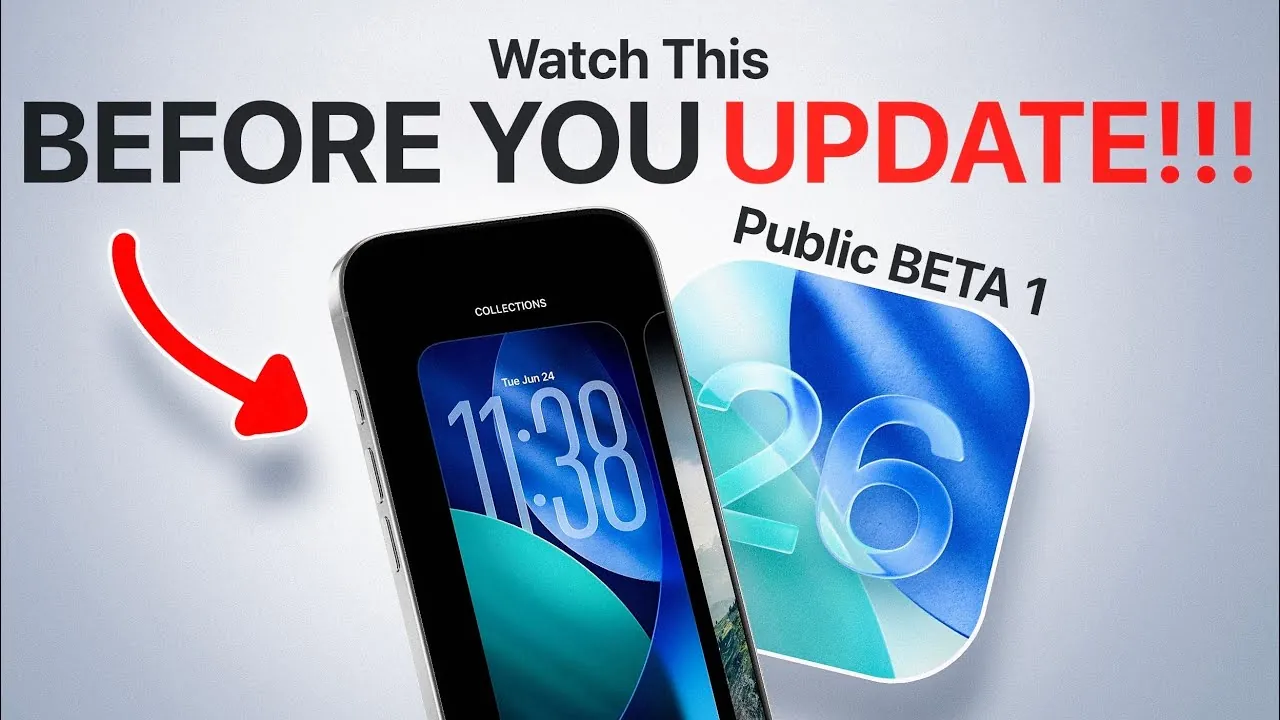
Apple’s iOS 26 Public Beta 1 is set to launch around July 23, 2025, offering early access to the latest features and enhancements of its operating system. While the beta provides a glimpse into upcoming innovations, it also comes with potential challenges that users should consider. The video below from iDeviceHelp explores the release timeline, installation process, potential drawbacks, and the differences between public and developer betas. By understanding these aspects, you can make an informed decision about whether to update or wait for a more polished version.
Release Timeline and Rollout Strategy
Apple employs a phased rollout strategy for iOS 26 to ensure a smoother experience for users. The Developer Beta 4 is expected to arrive earlier in the week, allowing developers to test the software and report any critical bugs. Following this, the Public Beta 1 will be released around June 23, incorporating fixes and improvements based on developer feedback. This staggered approach aims to provide public beta users with a more stable version of the software while still allowing them to experience new features ahead of the official release.
Steps to Install iOS 26 Public Beta
Installing the iOS 26 Public Beta is a relatively simple process, but preparation is essential to avoid potential issues. Follow these steps to get started:
- Open your device and navigate to Settings > General > Software Updates > Beta Updates.
- Select the public beta option and initiate the download process.
- Before proceeding, back up your device using iCloud or a computer to safeguard your data in case of unexpected issues.
While the installation process is straightforward, remember that beta software can be unpredictable. Be prepared for potential glitches, and ensure you’re comfortable with the risks before updating.
Downgrading: What to Do If the Beta Isn’t for You
If you find that the iOS 26 Public Beta doesn’t meet your expectations, you can revert to iOS 18, but the process requires careful steps and preparation. Here’s how to downgrade:
- Connect your device to a computer using a USB cable and enter recovery mode.
- Use iTunes (on Windows) or Finder (on macOS) to manually restore your device to iOS 18.
- Keep in mind that downgrading may result in data loss if you haven’t created a recent backup.
This process can be time-consuming and highlights the importance of considering whether the beta is right for you before installing it.
Battery Performance: What to Expect
Battery life is often a concern during beta testing, and iOS 26 is no exception. While recent developer betas have shown some improvements in battery optimization, users may still experience faster battery drain compared to stable releases. If maintaining reliable battery performance is critical for your daily activities, it may be wise to wait for later beta versions or the final release, which are likely to include further refinements.
Public Beta vs. Developer Beta: Key Differences
The public and developer betas of iOS 26 share the same features and functionality, but there are important distinctions between the two. The developer beta is released earlier and is intended for developers to identify and report bugs. In contrast, the public beta is released later and incorporates fixes for critical issues identified in the developer version. This additional testing phase makes the public beta a more stable and user-friendly option for non-developers who want to explore new features without encountering significant disruptions.
Known Issues and Bug Fixes
As with any beta software, iOS 26 Public Beta 1 is not without its flaws. While it benefits from bug fixes applied to earlier developer versions, users should still expect some issues. Common challenges may include:
- Minor glitches affecting system performance, such as occasional freezes or crashes.
- Compatibility problems with certain third-party apps, which may not yet be optimized for iOS 26.
These issues are a normal part of the beta experience and are typically addressed in subsequent updates as Apple gathers feedback from users.
Is Updating the Right Choice for You?
Deciding whether to install iOS 26 Public Beta 1 depends on your individual needs and priorities. Consider the following:
- If you rely on your device for critical tasks or need consistent performance, it may be better to wait for later beta versions or the final release to avoid potential disruptions.
- If you’re eager to explore the latest features and are comfortable with potential challenges, ensure your device is backed up and proceed with caution.
By carefully weighing the pros and cons, you can determine whether the beta aligns with your requirements and expectations.
Making the Most of iOS 26 Public Beta
The iOS 26 Public Beta 1 offers a unique opportunity to explore Apple’s latest software developments ahead of the official release. However, it’s important to approach the beta with realistic expectations, understanding both its potential benefits and its limitations. Whether you choose to update now or wait, being informed about the process and potential challenges will help you make the best decision for your device and usage needs.
Discover other guides from our vast content that could be of interest on iOS 26 Public Beta.
Source & Image Credit: iDeviceHelp
Filed Under: Gadgets News
Latest Geeky Gadgets Deals
Disclosure: Some of our articles include affiliate links. If you buy something through one of these links, Geeky Gadgets may earn an affiliate commission. Learn about our Disclosure Policy.

